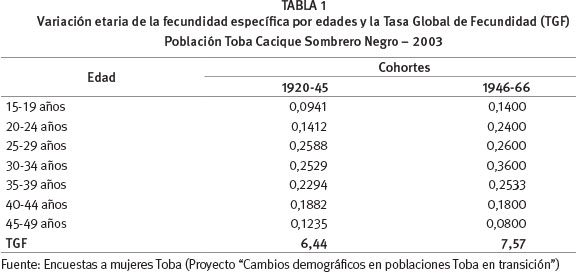Demographic variations in a given population are frequently associated to environmental changes. The social, economic, and cultural particularities of indigenous populations would then produce a great variety of demographic regimes. Although Latin America, in general, and in Argentina, in particular, have experienced an important decline in fertility, indigenous populations in this region show demographic changes that are at odds with this trend. This study evaluates fertility parameters and their determinants in the Toba population of Cacique Sombrero Negro, in northern Argentina, which is undergoing a significant lifestyle change. A total of 336 Toba women were interviewed, allowing the calculation of age-specific fertility rates, total fertility rates, parity progression ratios and primary infertility rates for women born between 1920 and 1966. For these women, we also estimated age of the mother at first birth, interbirth intervals and mother's age at last birth. Our results indicate that, compared to women born between 1920 and 1945, those born between 1946 y 1966 show an increase in fertility values, a decline in age at first birth, a faster reproductive pace and an increase in age at last birth. These results suggest favorable social, sanitary, biological and economic changes that would have determined an increase in fertility parameters in the younger cohort.
Toba; Fertility; Fertility determinants; Demographic transition




